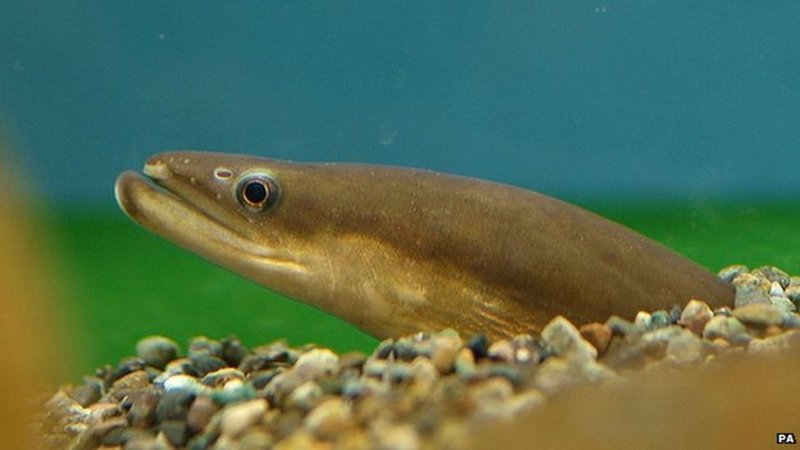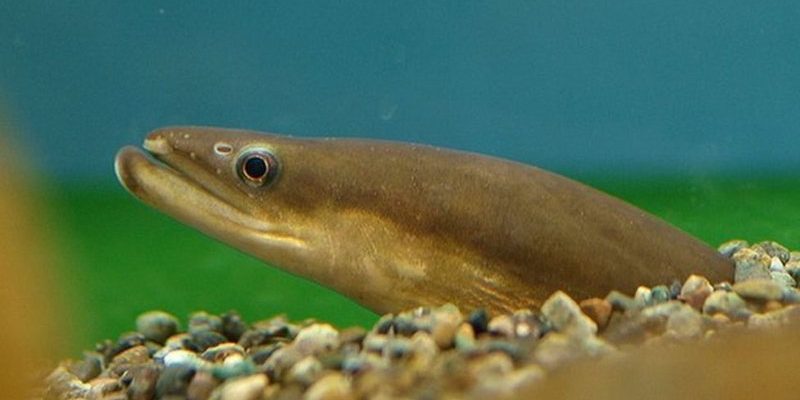
The Japanese eel, or Anguilla japonica, is a fascinating creature that gracefully slithers through the waters of East Asia. Imagine an aquatic snake, sleek and elongated, that journeys from the open ocean into rivers and streams. This eel has long been a part of Japanese culture and cuisine, making it not just a fish but a part of history. The Japanese eel has captured the imagination of many, not just for its unique life cycle but also for its culinary significance.
To appreciate this remarkable fish, you have to dive deep into its world. The Japanese eel begins its life in the Sargasso Sea, far across the ocean. At some point, these eels make a heroic journey to their home waters, where they spend the majority of their lives. Once you understand their life cycle, it’s easy to see why they hold such importance both ecologically and culturally. But there’s so much more to the Japanese eel than just its journey. Let’s explore what makes this creature so captivating.
Physical Characteristics
The Japanese eel sports a distinct, slender body that can reach up to 1 meter (about 3.3 feet) in length, though some specimens can grow even longer. They range in color from a dark brown to a grayish hue, often with a slightly lighter belly. This coloration helps them blend into their watery surroundings, protecting them from predators. Their skin is smooth and covered in a layer of mucus, allowing them to glide through the water effortlessly. But it’s not just their size and color that make them impressive; it’s their unique anatomy that contributes to their survival.
These eels have a long, tapered head, which makes it easier for them to navigate through narrow gaps in rocks and underwater vegetation. You might be surprised to learn that they have no pelvic fins, but they do have pectoral fins that help them steer and maintain balance in the water. The addition of a strong, muscular tail enables them to propel themselves forward, making for a graceful swimmer that can navigate swift currents. And, unlike many fish, the Japanese eel can adapt to both salt and freshwater environments—an ability that’s pretty nifty for its survival.
Habitat and Distribution
Japanese eels are primarily found in the coastal waters of East Asia, with their life cycle intricately tied to both marine and freshwater habitats. They breed in the Sargasso Sea, where the young hatch as larvae and set out on a remarkable journey toward the coasts of Japan, Korea, and China. This journey can take them several months, where they gradually transform from larvae into glass eels, recognizable by their transparent bodies. They then make their way upstream into rivers and lakes, seeking out areas with adequate cover to grow and thrive.
These eels favor shallow coastal waters and estuaries that provide rich feeding grounds. They often inhabit muddy or sandy bottoms and can be found hiding among rocks or aquatic plants. This habitat is crucial for their growth, providing them with food sources such as small fish, crustaceans, and worms. As adults, they migrate back to the ocean to spawn, completing their life cycle—an extraordinary journey of thousands of kilometers!
Diet and Feeding Habits
The diet of the Japanese eel is as fascinating as its journey. As juveniles, they primarily consume zooplankton and tiny aquatic invertebrates. As they mature into adults, their diet shifts significantly. They become opportunistic carnivores, feasting on a variety of prey items, such as fish, crustaceans, and even some aquatic insects. This adaptability in diet plays a crucial role in their survival strategies, allowing them to thrive in diverse environments.
Feeding usually occurs during dusk and dawn when these eels are most active. They have a keen sense of smell and can detect prey from a distance, thanks to their sensitive nostrils. This keen olfactory ability allows them to hunt effectively in murky waters where visibility may be low. Interestingly, Japanese eels are also known for their unique hunting style: they often ambush their prey by hiding quietly until the perfect moment to strike. This combination of stealth and speed makes them formidable predators in their aquatic world.
Reproduction and Life Cycle
The reproduction of the Japanese eel is a mystery that has fascinated scientists for decades. Spawning is believed to take place in the Sargasso Sea, but the exact location and process remain largely unexplored. After fertilization, the eggs drift with the currents, eventually developing into larvae known as leptocephali. These larvae are leaf-shaped and can float on ocean currents for several months before transforming into glass eels and making their way to coastal waters.
Once they reach freshwater or brackish environments, they grow into what is known as elvers. Over the next several years, they continue to develop into mature eels, a process that can take from 6 to 20 years, depending on the environmental conditions. During this growth phase, they undergo significant physiological changes, including the darkening of their skin and transformation into a more streamlined adult form. This fascinating transformation is just one of the many wonders of the Japanese eel’s life cycle.
Conservation Status
Sadly, the Japanese eel faces numerous threats that have led to a decline in its population. Overfishing, habitat loss, and pollution are major concerns that put pressure on these incredible creatures. In Japan, they have been a culinary delicacy for centuries, leading to intense commercial fishing practices that have greatly reduced their numbers. As a result, the Japanese eel is now classified as “Endangered” by the International Union for Conservation of Nature (IUCN).
Efforts are underway to protect this vital species. Conservation programs focus on sustainable fishing practices, habitat restoration, and the improvement of water quality in their native environments. Scientists are also researching breeding methods in captivity to replenish populations. This is crucial, as understanding the full life cycle and breeding habits is key to ensuring a future for this remarkable animal.
Table of Facts About Japanese Eels
| Scientific Name: | Anguilla japonica |
| Length: | Up to 1 meter (3.3 feet) |
| Diet: | Carnivorous; fish, crustaceans, aquatic insects |
| Habitat: | Coastal waters, estuaries, rivers, lakes |
| Reproduction: | Spawns in the Sargasso Sea |
| Conservation Status: | Endangered |
Cultural Significance
The Japanese eel holds a special place in Japanese culture, especially when it comes to cuisine. Known as unagi, it is a popular dish served grilled with a sweet soy-based sauce, often enjoyed during the hot summer months. Eating unagi is not just about flavor; it is steeped in tradition, believed to provide stamina and vitality for the hot season. It’s fascinating how a simple dish can reflect cultural values and practices.
Beyond the plate, the Japanese eel is also a symbol of persistence and resilience. Its long and challenging journey from the Sargasso Sea to its freshwater habitat resonates deeply with the importance of perseverance in Japanese folklore. Stories and legends often illustrate this journey, highlighting the eel as a metaphor for overcoming obstacles. This rich cultural tapestry around the Japanese eel makes it even more captivating for those who appreciate both nature and tradition.
FAQ
What is the lifespan of a Japanese eel?
The lifespan of a Japanese eel can range from 6 to 20 years, depending on environmental factors, food availability, and the specific conditions of their habitat. Those that reach maturity usually do so in between 10 to 15 years, which is quite long for a fish.
How do Japanese eels migrate?
Japanese eels migrate thousands of kilometers from the Sargasso Sea to rivers and lakes in East Asia. They initially hatch as larvae and ride ocean currents to reach their freshwater habitats. This journey is one of the longest migrations in the animal kingdom!
Are Japanese eels endangered?
Yes, Japanese eels are classified as “Endangered” due to overfishing, habitat loss, and pollution. Conservation efforts are underway to protect this species and ensure its survival for future generations.
What do young Japanese eels eat?
Young Japanese eels, or glass eels, primarily feed on zooplankton and tiny aquatic invertebrates. As they grow, their diet shifts to include larger prey like fish and crustaceans.
Can Japanese eels live in saltwater?
Yes, Japanese eels can adapt to both salt and freshwater environments. Their ability to transition between these habitats is vital for their survival, especially during different stages of their life cycle.
How do Japanese eels reproduce?
Japanese eels reproduce in the Sargasso Sea, where they spawn. After fertilization, the eggs drift into ocean currents, eventually transforming into larvae that make their way to coastal waters.
What is the role of Japanese eels in the ecosystem?
Japanese eels play a crucial role in their ecosystems as both predators and prey. They help control populations of smaller fish and invertebrates while serving as a food source for larger predators. This balance is vital for maintaining healthy aquatic populations.
Why are Japanese eels important in Japanese cuisine?
In Japanese cuisine, eels are celebrated for their unique flavor and texture. They are often grilled and glazed in a sweet soy sauce, making them a seasonal delicacy that symbolizes vitality and good health during hot summer months.
What challenges do Japanese eels face in the wild?
Japanese eels face several challenges, including habitat destruction, pollution, and overfishing. These threats have led to a decline in their populations, making efforts for conservation critical.
How can I help protect Japanese eels?
You can help protect Japanese eels by supporting sustainable seafood initiatives, participating in local conservation efforts, and spreading awareness about their importance in ecosystems. Every bit contributes to their survival!
Where can I find Japanese eels in the wild?
Japanese eels can be found in the coastal waters, rivers, and lakes of East Asia. If you’re interested in spotting them, focus on shallow waters where they are likely to hide among rocks or vegetation.
What is the taste of Japanese eel like?
Japanese eel is known for its rich, savory flavor and tender texture. When grilled, it has a slightly sweet, smoky taste that pairs beautifully with rice, making it a beloved dish in Japanese cuisine.

